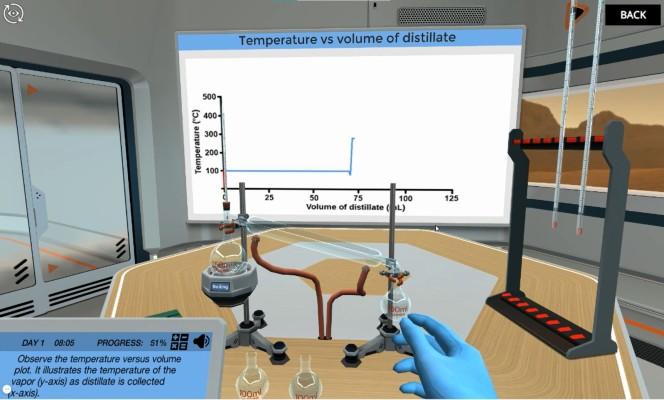
Distillation is a common industrial technique for separating two mixtures based on their boiling points. It is used in everything from getting clean water out of salty sea water to making gasoline from crude oil. Considering its great significance, it is a part of every introductory chemistry course.
However, distillation, with its abstract nature and chemical equation complexities, may not readily engage students. To transform this topic into an enjoyable and intriguing learning journey, this article suggests five creative ways to teach the concept of simple distillation.
Distillation is an abstract process that needs something visual and interactive to make the subject comprehensible for students. Although traditional lab experiments play an essential role, interactive models and virtual labs add a new dimension to learning. They allow students to manipulate variables, test hypotheses, and witness results in real time, enhancing their understanding of distillation.
An example is Labster's 3D labs, especially our simple distillation virtual lab. Here, students can configure the distillation apparatus, choose different mixtures for distillation, and observe the separation process without physical constraints or safety hazards.

This real-time interaction empowers students with hands-on understanding and promotes active learning.
Games and activities effectively break the monotony of learning abstract concepts like distillation. They provide interactive learning experiences, which lead to better engagement and comprehension.
Some interactive activities to engage students and encourage their participation are listed:
Leveraging technology in teaching distillation can be transformative. Tools such as virtual reality or online simulations provide immersive experiences, which make learning more engaging and effective.
An excellent resource is Labster's simple distillation simulation. This immersive simulation takes students to a 3D world of Mars, where they are tasked to recycle the products by using distillation principles. They engage in a realistic distillation process in a virtual lab, doing experiments and analyzing results in real time.

These virtual experiences let them understand how the process is used in real life and help them grasp distillation concepts more effectively.
Discover Labster's simple distillation virtual lab today!
Connecting distillation principles to real-world careers can enhance students' interest in the subject. They will help them understand the practical importance of distillation and inspire them to explore related fields.
A range of careers use distillation, including chemical engineering, petroleum refining, food and drink industries, and even perfume creation.
Additionally, to motivate them inviting guest speakers from these fields is another excellent approach. They will provide students with research and insights into the practical world of distillation, further inspiring and broadening their perspective on potential career paths.
Teaching distillation with real-world applications makes the concept more relatable and exciting. Students understand the practicality of the subject and realize its significance beyond the classroom.
Applications of distillation are ubiquitous – it is used in oil refining to separate petroleum products, in breweries to distill alcohol, and in desalination plants to obtain clean water from seawater.
To further spark their interest, you can organize field trips, such as to a desalination plant or a refinery, where students can witness distillation in action.
The key to effective teaching, especially for complex topics like distillation, lies in the use of diverse strategies. Engage students through games, leverage modern technology, tie the subject to careers, and show real-world applications to drastically improve students' comprehension.
Try our free 30-day All Access Educator's Pass today and teach with the Simple Distillation simulation alongside 300+ other virtual labs!

Labster helps universities and high schools enhance student success in STEM.
Request DemoRequest a demo to discover how Labster helps high schools and universities enhance student success.
Request Demo